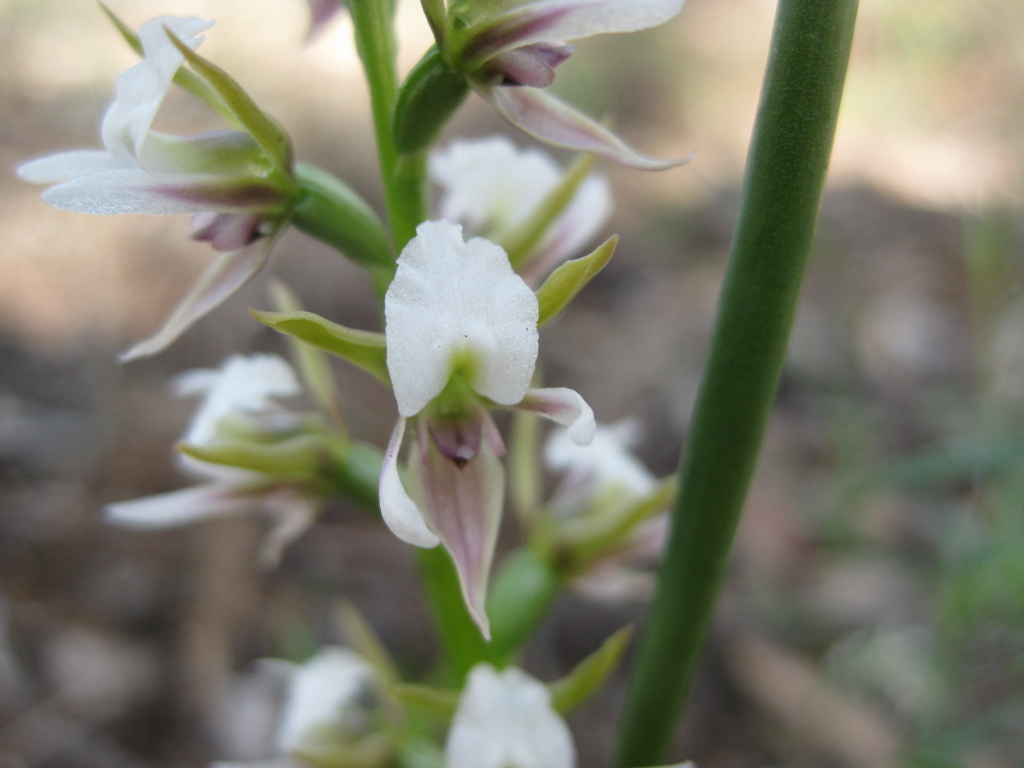Prasophyllum beatrix
D.L.Jones & D.T.RouseFlowering stem robust, to 60 cm high. Leaf-blade to c. 60 cm long, base 2–8 mm diam., free for up to 25 cm, dark green. Flowers 8–35, primarily white with greenish-brown or purplish markings, lemon-scented, in a dense spike 5–12 cm long; ovary obovoid, 6–9 mm long; sepals 10–12 mm long, pale greenish-brown to purplish, dorsal sepal held more or less horizontally to slightly decurved, narrowly ovate-lanceolate, lateral sepals free, linear-lanceolate, usually divergent, suberect, gently recurved; petals 10–14 mm long, linear-lanceolate, proximally greenish-brown or purplish, proxmally usually white. Labellum 12–15 mm long, oblong- to ovate-lanceolate, white, crystalline, recurved beyond 90 degrees near the middle, the apex protruding between lateral sepals, margins strongly crisped-crenulate; callus yellowish-green, darker and swollen near base, elsewhere thin-textured, channelled, ending just past the labellum bend. Column appendages oblong to slightly falcate, c. 3.5 mm long, tapered. Flowers Sep.–Oct.
NIS. Also NSW, ?SA. Known only from grassy woodland in Terrick Terrick National Park, near Mitiamo and Callitris forest in the Hattah Kulkyne National Park (where possibly now extinct).
This relatively recently described species is a member of the Prasophyllum odoratum group and distinguished from P. odoratum by its more robust habit and generally larger and more crowded flowers. The P. odoratum complex however remains a difficult group and the boundaries between several informal taxa within the group are unclear.
 Spinning
Spinning
